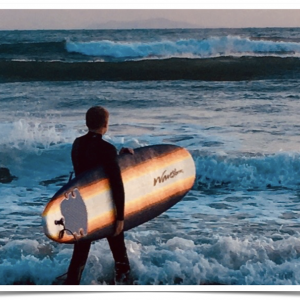Engaging English (F21 ENGL 20200-002 Purdue) Dashboard
Description
 This class will teach you how to surf (the Internet) and about the various ways that English studies have been transformed over the last few decades. Starting with some basic close-reading and analysis skills (aided by annotation at COVE Studio), we will then explore how those skills have been increasingly applied to new areas of inquiry (tv, film, culture, critical theory, and politics). Throughout, we will employ new digital tools that change the way we approach our subjects of inquiry, including Web annotation, timeline-building, gallery-building and GIS mapping. As we proceed, we will consider the nature of English studies: What is an English department and how does it relate to the rest of the university? What can you do with an English degree? Why is it necessary to fight for English in an increasingly STEM-oriented world?
This class will teach you how to surf (the Internet) and about the various ways that English studies have been transformed over the last few decades. Starting with some basic close-reading and analysis skills (aided by annotation at COVE Studio), we will then explore how those skills have been increasingly applied to new areas of inquiry (tv, film, culture, critical theory, and politics). Throughout, we will employ new digital tools that change the way we approach our subjects of inquiry, including Web annotation, timeline-building, gallery-building and GIS mapping. As we proceed, we will consider the nature of English studies: What is an English department and how does it relate to the rest of the university? What can you do with an English degree? Why is it necessary to fight for English in an increasingly STEM-oriented world?
See below, "Galleries, Timelines, and Maps," in order to add items to our collective map, timeline and gallery exhibit. Click on the links below to begin.
Galleries, Timelines, and Maps
There is no content in this group.
Individual Entries
Starting on January 10, 1917, the Silent Sentinels began holding organized pickets outside of the White House. The Silent Sentinels were a group of over 2000 suffragists led by activist Alice Paul and the National Woman's Party co-founder Lucy Burns. The group acquired their name by protesting in complete silence. They all wore clothing that were purple and yellow. They also wore gold sashes and white ribbons. Instead of demonstrating with words, they chose silence as their protest tactic. They also carried banners and signs that displayed the messages they wanted to convey. Most of the messages they displayed supported suffrage, but many also called President Wilson to action. Some even accused him of hypocrisy, as he made it seem like he supported their movement but then stated that women's suffrage was a matter to be decided by states and should not be a federal matter. The women were steadfast in their protesting, showing up 6 days a week for 2 years for hours on end in...
moreOn February 20, 1988, twenty thousand people gathered in Albert Square in Manchester to protest Section 28 of the Local Government Act. The protests were planned by both the city council and members of a campaign for LGBTQ+ rights. Many local businesses supported their efforts as well (Williams). The protests came about because LGBTQ+ people and their allies were horrified by the blatant homophobia of Section 28, so they took to the streets to rally against it. It is important to note that the beginning of a shift in perspective in Manchester regarding LGBTQ+ rights was already underway. By the mid-1980s, Manchester, “...had a well‐established gay centre, a local gay press and proactive...council championing gay and lesbian rights,” (Cook 5). All of this set the stage for future activism and protests in the city.
The protests on February 20, 1988 occurred when Section 28 was first being introduced, a full...
more
Fort Benning, Georgia, is the home of Army Infantry and Maneuver. Within the walls of the well-known post include schools like Airborne, Jumpmaster, Pathfinder, Armor, and the famous Ranger School. On August 21, 2015, Captain Kristen Griest and First Lieutenant Shaye Harver became the first two female soldiers to earn their Ranger tab. Later, on December 13, 2019, Staff Sergeant Danielle Farber and Staff Sergeant Jessica Smiley became the first two female enlisted soldiers from the National Guard to complete Ranger School. Becoming an Army Ranger is not for the weak or fainthearted. Soldiers must endure three phases, the first being at Fort Benning centered on physical and mental toughness. The next phase takes place in the...
more